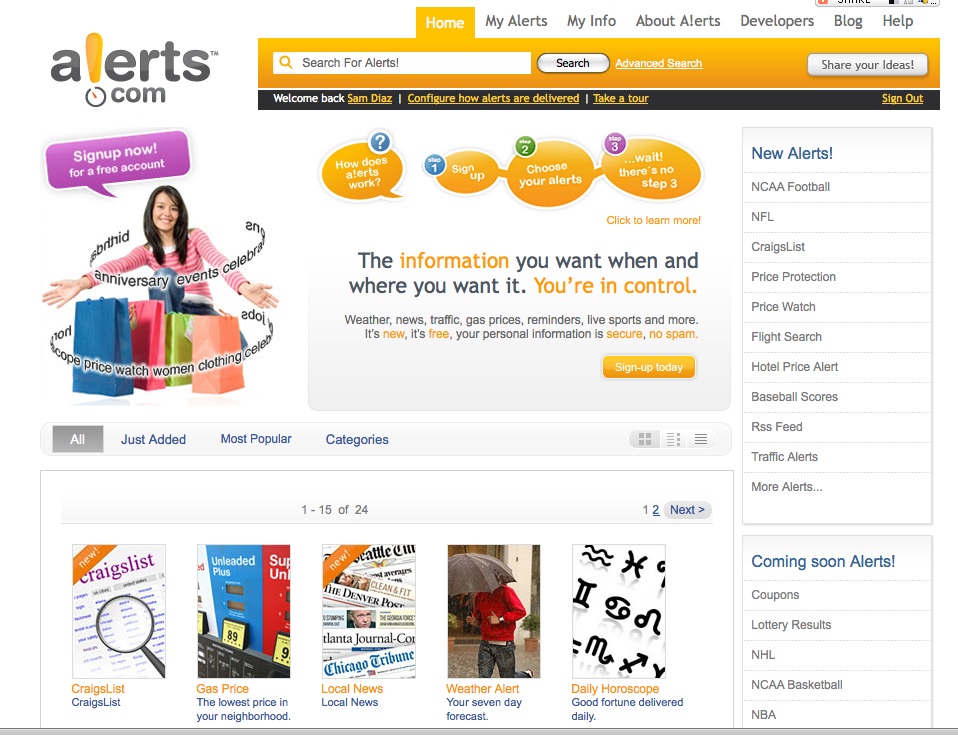DEMO: Today's Web becomes a two-way street

The opening sessions at the DEMOfall conference in San Diego were kicked off with an interesting take on the evolution of the Web by executive producer Chris Shipley. Since the beginning of the Web, it's grown from a mostly-text online inventory of information to a transactional Web, a place buying and selling occurred. Later, it shifted again, into a social platform that we commonly refer to as Web 2.0. Now, the next shift is coming, morphing into what Shipley calls the "distributed Web." Some of the emerging technologies being showcased at DEMO look at the distribution, syndication and integration of content, which basically means we want to create, find and access content on the Web (even if it doesn't look like the standard Web site) from anywhere, at any time and using any device.
The first DEMO session on Monday featured a number of examples that fall under this theme's umbrella:
Alerts.com: This is the first service I signed up for today and am anxious to see how it works during the Monday Night Football game I'll miss tonight because I'll be tied up with the conference. I asked for an alert to be sent by SMS text to my phone, notifying me every time the score of the game changes. Last night, I was launching my mobile browser to stay updated on the scores but tonight I'll wait for the scores to come to me. 
RealDVD: Real Networks introduced RealDVD, a product that will put the home DVD collections right alongside the music CD collections - in the attic. What it does is "rip" the movie to your computer - either on the hard drive, an external drive or even a flash drive for portability. The software, which will be $30 when it goes on sale later this month, will give the user the license to make a single copy of a DVD, playable only on the Windows computer that ripped it. But, for an additional $20, users can authorize playback on another computer, up to 5. The user interface is pretty easy to follow and the ripping process includes all of the extras that come on the DVD. As cool as this is, it's also likely to be controversial, given Hollywood's historical response to CD ripping and resistance to breaking encryption on DVDs.
The New TV: And speaking of digital video, there were several launches that surrounded the discovery and viewing of video - some TV, some on the Web.
Aggregating Web video: Increasingly, the video content on the Web isn't just the YouTube skateboarding tricks - obviously. Web video aggregators Channels.com and Invision.tv have created products that help users sift through and discover Web video in a way that makes it easy to sift through.
Photos: One of the coolest things I've seen with photos so far has nothing to do with manipulation, tagging or editing. Instead, it's all about selling. My wife has become quite the amateur photographer and we've even taken a few of her shots and had them enlarged, matted and framed as artwork for our living room. But most photos end up in the computer photo album - and that's where they stay. Photrade - which promises not to be another photo site - allows users to price and sell their pics or a license to use them.
DEMO continues today and tomorrow.